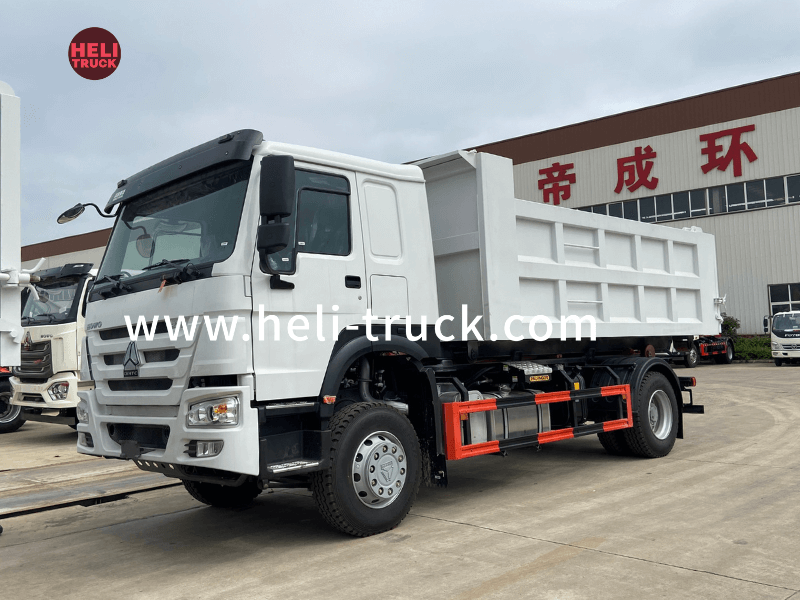Introduction
Garbage compactor trucks play a crucial role in waste management systems, helping to collect and compact waste efficiently to reduce the volume of trash and make transportation to disposal sites more cost-effective. These specialized vehicles are equipped with compactors that compress waste materials, allowing for more garbage to be stored and transported in each trip. In this article, we will delve into the detailed operation of garbage compactor trucks, exploring the various components, functions, and best practices involved in their use.
1. Overview of Garbage Compactor Trucks
Garbage compactor trucks are essential in urban environments where the collection and disposal of waste are daily tasks. These trucks come in various sizes and configurations, ranging from small units used for residential waste collection to large industrial vehicles that service commercial areas and construction sites. Road sweeper truck fuel efficiency behind the operation of a garbage compactor truck is to collect, compact, and transport waste efficiently while minimizing environmental impact.
2. Components of a Garbage Compactor Truck
A typical garbage compactor truck consists of several key components that work together to ensure the proper collection and compaction of waste. These components include:
- Chassis: The chassis forms the foundation of the garbage compactor truck, providing structural support and housing the engine, transmission, and other essential mechanical components.
- Compactor Body: The compactor body is the main container where waste is deposited and compacted. It is typically made of durable materials such as steel to withstand the rigors of waste collection.
- Compactor Mechanism: The compactor mechanism includes hydraulic cylinders, rams, and other components that compress the waste inside the compactor body, reducing its volume.
- Loading Mechanism: The loading mechanism, such as a rear loader or side loader, facilitates the collection of waste bins and containers and transfers the waste into the compactor body.
- Control Panel: The control panel allows the operator to control various functions of the garbage compactor truck, such as activating the compactor mechanism, operating the loading mechanism, and monitoring hydraulic systems.
3. Operation of a Garbage Compactor Truck
The operation of a garbage compactor truck involves several steps to ensure the efficient collection and compaction of waste. The following are the typical stages involved in the operation of a garbage compactor truck:
- Route Planning: Before starting the collection route, the operator plans the most efficient path to minimize travel time and fuel consumption. Route optimization helps to maximize the truck's capacity and reduce environmental impact.
- Waste Collection: The operator drives the garbage compactor truck along the designated route, stopping at predetermined locations to collect waste bins and containers. The loading mechanism is used to lift and empty the bins into the compactor body.
- Waste Compaction: Once the waste is deposited in the compactor body, the operator activates the compactor mechanism to compress the waste. The hydraulic cylinders apply pressure to reduce the volume of the waste, allowing for more garbage to be stored in the compactor body.
- Monitoring and Safety Checks: Throughout the operation, the operator monitors the compaction process and performs safety checks to ensure that all components are functioning correctly. Regular maintenance and inspections are essential to prevent breakdowns and ensure the safe operation of the garbage compactor truck.
- Disposal: Once the compactor body is full, the operator drives the garbage compactor truck to the designated disposal site, such as a landfill or recycling facility. The waste is then unloaded from the compactor body for proper disposal or recycling.
4. Best Practices for Garbage Compactor Truck Operation
To ensure the efficient and safe operation of garbage compactor trucks, operators should follow best practices that promote productivity, environmental sustainability, and worker safety. Some of the key best practices include:
- Regular Maintenance: Garbage compactor trucks require regular maintenance to keep all components in optimal working condition. Scheduled inspections, lubrication, and repairs help prevent breakdowns and extend the lifespan of the vehicle.
- Proper Training: Operators should receive comprehensive training on the operation of garbage compactor trucks, including safety procedures, maintenance tasks, and emergency protocols. Proper training reduces the risk of accidents and ensures efficient waste collection.
- Environmental Awareness: Garbage compactor truck operators should be aware of environmental regulations and best practices for waste disposal. Sorting recyclable materials, minimizing emissions, and avoiding spills are essential for reducing the environmental impact of waste collection operations.
- Efficient Route Planning: Effective route planning helps optimize the collection process, reduce fuel consumption, and maximize the capacity of the garbage compactor truck. Utilizing route optimization software and real-time monitoring tools can streamline collection routes and improve operational efficiency.
5. Future Trends in Garbage Compactor Truck Technology
As technology continues to evolve, garbage compactor trucks are also benefiting from advancements that improve efficiency, safety, and sustainability. Some of the future trends in garbage compactor truck technology include:
- Electric Vehicles: Electric garbage compactor trucks are becoming more prevalent as cities seek to reduce emissions and transition to cleaner transportation options. Electric vehicles offer lower operating costs and environmental benefits compared to traditional diesel trucks.
- Automation: Automated garbage compactor trucks equipped with sensors, cameras, and robotic arms are being developed to streamline waste collection operations. These vehicles can enhance efficiency, reduce labor costs, and improve safety by minimizing human intervention.
- Telematics and Data Analytics: Telematics systems and data analytics software are being integrated into garbage compactor trucks to monitor vehicle performance, optimize routes, and track fuel consumption. Real-time data insights help operators make informed decisions and improve operational efficiency.

Conclusion
Garbage compactor trucks play a vital role in waste management systems, helping to collect, compact, and transport waste efficiently while reducing environmental impact. By understanding the components, operation, and best practices associated with garbage compactor trucks, operators can ensure the safe and efficient operation of these essential vehicles. As technology continues to advance, future trends in garbage compactor truck technology promise to further enhance efficiency, sustainability, and safety in waste collection operations.
